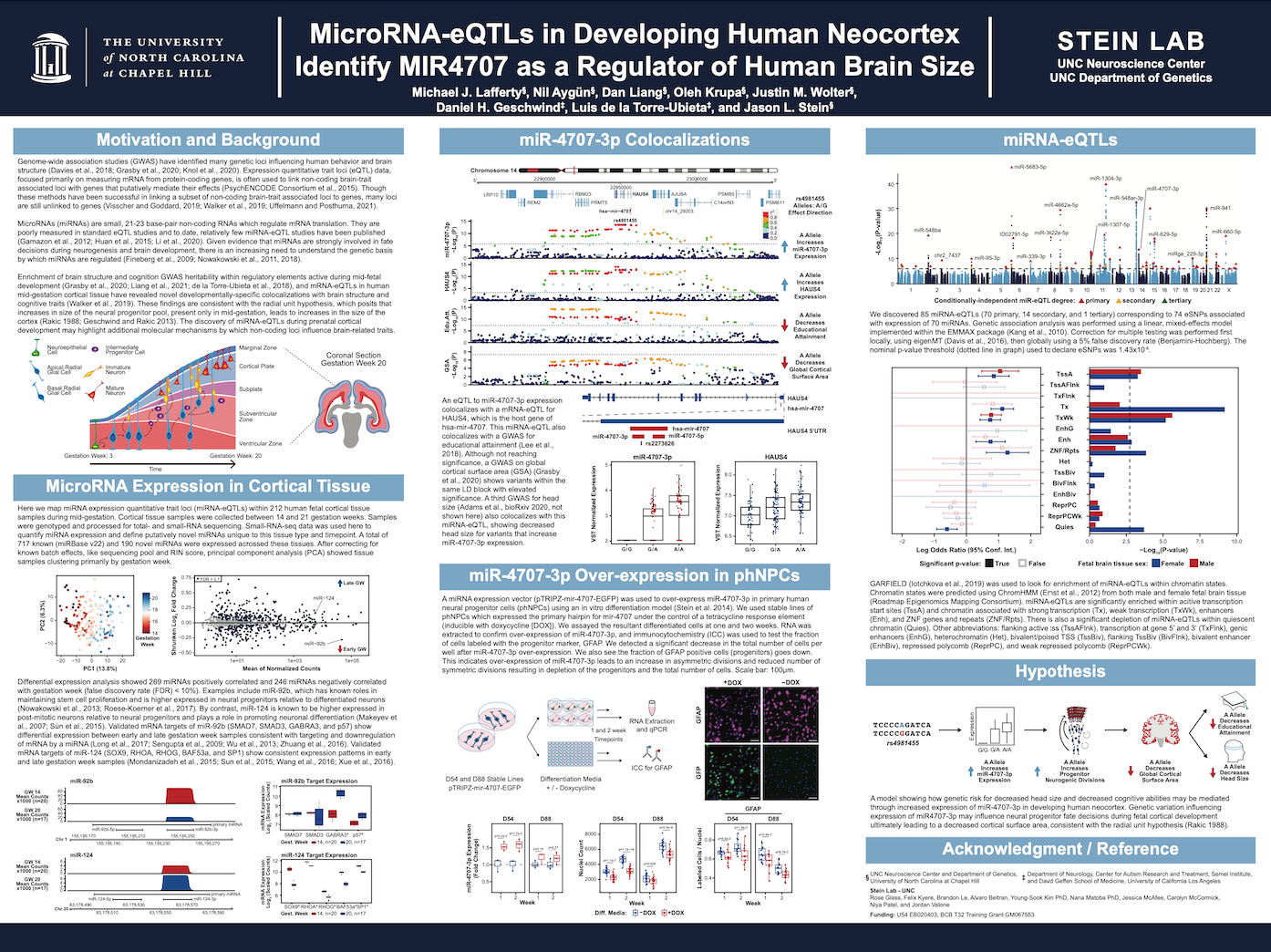MicroRNA eQTLs in the Developing Human Neocortex
Known and novel miRNA expression across 212 individuals yielded 85 local miRNA-eQTLs
Expression quantitative trait loci (eQTL) data is often used to link the genomic risk for neuropsychiatric disorders and brain-related traits discovered through genome wide association studies (GWAS) to putatively causal mechanisms via protein-coding genes. However, microRNAs (miRNAs) are poorly measured in standard eQTL studies despite their important influence on neurogenesis and known dysregulation in patients with neuropsychiatric disorders.
Here we used miRNA expression across 212 genetically distinct human developing cortical tissue samples to map cis-miRNA-eQTLs. We identified 85 miRNA-eQTLs associated with expression of 70 miRNAs and found enrichment of miRNA-eQTL signal within active transcription start sites and among chromatin associated with transcription. Colocalization of miRNA-eQTLs with GWAS summary statistics yielded one robust co-localization of miR-4707-3p expression to educational attainment and head size phenotypes.
To understand the mechanisms by which miR-4707-3p may alter brain size, a lentiviral expression vector was used to increase miRNA expression in proliferating human neural progenitor cells (hNPCs) and their differentiated progeny. After increasing expression of miR-4707-3p in primary human neural progenitor cultures and their differentiated progeny, we detected an increase in both proliferative and neurogenic gene markers by qPCR and ICC assays, implying an early cell-cycle exit and an increase in neurogenic divisions.
Manuscript
This research is currently published at eLife.
Code
Code repository for this manuscript is hosted on GitHub.
Poster
This project was most recently presented at the 2022 Molecular Psychiatry Meeting. See the poster here:
